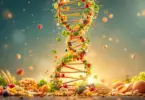Guest Writer for Wake Up World
Since the mid-80s, the rate of colon cancer has been slowly declining at the rate of about 1 percent per year, but it seems we always have bad news mixed in somewhere. Traditionally thought of as a disease affecting the over 50s, one study paints a gloomy picture. Not only is there a sharply increasing rate in patients under 50, but also advanced stages of the cancer are being developed. [1]
Colon cancer is a sneaky, deadly disease, but there is hope. Did you know that science has determined key lifestyle actions that you can take to protect you and the ones you love? While a cancer screening is certainly an option for detection, here are 7 things that might help you reduce your risk for colon cancer.
[pro_ad_display_adzone id=”110028″]
1. Quitting Smoking
There are many reasons for you to quit smoking right now, but one of the most important might be cutting your risk for colon cancer. For the first time, the latest research from the Surgeon General comments the two are “causally linked,” also recognizing diabetes, liver cancer, and other diseases as potential dangers. [2] While smoking and health risks are known, this new development is a sinister one: even the director of the CDC comments “after 50 years, we’re still finding new ways […] smoking maims and kills people.”
2. Getting Up
We sit down to work, to eat, to watch TV—the list goes on. Our culture of sitting is nothing new, but it could be hurting us. Another study suggested prolonged sitting could be responsible for over 40,000 colon cancer cases each year; but, before you get rid of your chairs, know it’s long bouts of sitting that is the problem. Things as simple as short walks could be the solution. [3] [4]
3. Maintaining a Healthy Weight
There’s also evidence suggesting that getting rid of that extra weight around your middle might reduce your risk—especially if you’re over a certain age. A European study followed 120,000 overweight or obese adults ages 55 to 69 for a period of 16 years, finding the diagnosis of colon cancer was 25 percent higher than that in their thinner counterparts. Interestingly, women were able to further reduce their risk through regular exercise of at least 30 minutes per day. [5]
4. Cutting Red Meat from Your Diet
With many studies suggesting eating red meat—especially processed products—could raise your risk of colon cancer, what better time to try something new? [6] [7] No one’s really sure what about the meat increases your risk. One theory poses preservatives in processed meats are converted into nitrates. While nitrates are present in many foods, too many can be toxic to the body.
5. Cutting Your Sugar Intake
It’s not just about eating red meat; diets high in sugar are also a concern. As many countries push toward diets heavy in refined sugars and high fructose corn syrup, colon cancer cases have also increased. Studies have long since commented on a potential link, but the latest leads scientists to believe sugar-heavy diets influence the health of gut bacteria, something which can cause a myriad of health issues. [8]
6. Avoiding Antibiotics
Some antibiotics can also change your gut bacteria, leading to a less-than-favorable outcome for your health. Similar to a sugar-heavy diet, antibiotics may increase your risk for colon cancer. In a UK study that examined over 20,000 medical records of cancer patients in relation to those of 86,000 healthy patients, those who were prescribed penicillin, quinolones, and metronidazole were about 10 percent more likely to develop colon cancer. [9] While more research is needed, these findings do start to suggest a bigger picture.
7. Get Enough Vitamin D
The latest research also suggests vitamin D levels correspond to your risk factor for colon cancer. [10] Found in many foods and from sun exposure, the vitamin can also potentially reduce your chances of developing other internal cancers. Sure, there are plenty of ways to get the vitamin D you need, but going outside—with responsible sun protection, of course–is your best bet. While the amount needed is still under debate, one magic range seems to be a daily intake of 1,000-2,000 IU.
One Final Thought
While these tips are not the cure all, they may help reduce your risk. There’s some who would argue that a cancer diagnosis is something pre-determined in your DNA, or the product of a random mutation; but, knowing that there are little things you can do to potentially reduce your risk gives you power over your genes. [11] It’s definitely something to consider in your day-to-day life.
What do you think? Do you know of other ways to reduce your risk for colon cancer? Share a comment below.
-Dr. Edward F. Group III, DC, NP, DACBN, DCBCN, DABFM
Article References:
- Bailey, C, et al. Increasing Disparities in the Age-Related Incidences of Colon and Rectal Cancers in the United States, 1975-2010. JAMA Surgery. 150 (1).
- U.S. Department of Health and Human Services. The Health Consequences of Smoking—50 Years of Progress. U.S. Department of Health and Human Services.
- Rettner, R. Prolonged Sitting Linked to Breast and Colon Cancers. Scientific American.
- Meyerhardt, J. Physical Activity and Survival After Colorectal Cancer Diagnosis. Journal of Clinical Oncology. 24 (22).
- Hughes, L. et al. Body Size and Colorectal Cancer Risk After 16.3 Years of Follow-up: An Analysis From the Netherlands Cohort Study. American Journal of Epidemiology. 174 (10).
- Chao. A. et al. Meat consumption and risk of colorectal cancer. JAMA. 293 (2).
- Norat, T. et al. Meat, fish, and colorectal cancer risk: the European Prospective Investigation into cancer and nutrition. Journal of the National Cancer Institute. 97 (12).
- Martin, A. et al. Gut Microbial Metabolism Drives Transformation of Msh2-Deficient Colon Epithelial Cells. Cell. 158 (2).
- Boursi, S. et al. Impact of antibiotic exposure on the risk of colorectal cancer. Journal of Clinical Oncology.
- Gorhum, E. et al. The Role of Vitamin D in Cancer Prevention. American Journal of Public Health. 96 (2).
- Vogelstein, B. & Tomasetti, C. Variation in cancer risk among tissues can be explained by the number of stem cell divisions. Science. 347 (6217).
Previous articles by Dr. Group:
- The 10 Best Herbs for Kidney Cleansing
- 6 Things You Must Know About Colloidal Silver
- The 9 Best Herbs for Lung Cleansing and Respiratory Support
- 7 Best Foods to Support Kidney Function
- The 12 Best Foods for Testosterone Support
- Lung Cleansing With Peppermint Oil
- Nine Shocking Dangers of Fluoride Exposure
- Seven Facts You May Not Know About Coconut Oil
- 5 Dangerous Chemicals in Conventional Sunscreens
- 10 Best Herbs for Boosting Female Sex Drive
About the author:
 Dr. Edward F. Group III (DC, ND, DACBN, DCBCN, DABFM) founded Global Healing Center in 1998 and is currently the Chief Executive Officer. Heading up the research and development team, Dr. Group assumes a hands-on approach in producing new and advanced degenerative disease products and information.
Dr. Edward F. Group III (DC, ND, DACBN, DCBCN, DABFM) founded Global Healing Center in 1998 and is currently the Chief Executive Officer. Heading up the research and development team, Dr. Group assumes a hands-on approach in producing new and advanced degenerative disease products and information.
Dr. Group has studied natural healing methods for over 20 years and now teaches individuals and practitioners all around the world. He no longer sees patients but solely concentrates on spreading the word of health and wellness to the global community. Under his leadership, Global Healing Center, Inc. has earned recognition as one of the largest alternative, natural and organic health resources on the internet.
For more information, please visit Global Healing Center.
[pro_ad_display_adzone id=”110027″]







